Students can download 10th Social Science Civics Chapter 1 Indian Constitution Questions and Answers, Notes, Samacheer Kalvi 10th Social Science Guide Pdf helps you to revise the complete Tamilnadu State Board New Syllabus, helps students complete homework assignments and to score high marks in board exams.
Tamilnadu Samacheer Kalvi 10th Social Science Solutions Civics Chapter 1 Indian Constitution
Samacheer Kalvi 10th Social Science Indian Constitution Text Book Back Questions and Answers
I. Choose the correct answer
Question 1.
Which of the following sequences in right regarding the Preamble?
(a) Republic, democratic, secular, socialist, sovereign
(b) Sovereign, socialist, secular, republic, democratic
(c) Sovereign, republic, secular,socialist, democratic
(d) Sovereign, socialist, secular, democratic, republic
Answer:
(d) Sovereign, socialist, secular, democratic, republic
Question 2.
How many times has the Preamble to the Constitution of India amended?
(a) once
(b) Twice
(c) Thrice
(d) Never
Answer:
(a) once
![]()
Question 3.
The Indian Constitution gives to its citizens:
(a) Double Citizenship
(b) Single Citizenship
(c) Single Citizenship in some States and double in others
(d) None of the above
Answer:
(b) Single Citizenship
Question 4.
A foreigner can acquire Indian citizenship through …………..
(a) Descent
(b) Registration
(c) Naturalisation
(d) All of the above
Answer:
(c) Naturalisation
Question 5.
Find the odd one out.
(a) Right to Equality
(b) Right against Exploitation
(c) Right to Property
(d) Cultural and Educational Rights
Answer:
(c) Right to Property
Question 6.
One of the following is not an instance of an exercise of a fundamental right?
(a) Workers from Karnataka go to Kerala to work on the farms.
(b) Christian missions set up a chain of missionary schools.
(c) Men and Women government employees got the same salary.
(d) Parents property is inherited by their children
Answer:
(d) Parents property is inherited by their children
Question 7.
If the fundamental rights of Indian citizen are violated, they possess the right to have an access to:
(a) The Parliament
(b) The Attorney General
(c) The President of India
(d) The Supreme court of India
Answer:
(d) The Supreme court of India
![]()
Question 8.
Which one of the following rights was described by Dr. B. R. Ambedkar as the heart and soul of the Constitution?
(a) Right to freedom of religion
(b) Right to equality
(c) Right to Constitutional remedies
(d) Right to property
Answer:
(c) Right to Constitutional remedies
Question 9.
How can the Fundamental Rights be suspended?
(a) If the Supreme Court so desires
(b) If the Prime Minister orders to this effect
(c) If the President orders it during the national emergency
(d) All of the above
Answer:
(c) If the President orders it during the national emergency
Question 10.
We borrowed the Fundamental Duties from the ……………..
(a) American Constitution
(b) Canadian Constitution
(c) Russian Constitution
(d) Irish Constitution
Answer:
(c) Russian Constitution
Question 11.
The Directive Principles can be classified into:
(a) Liberal and Communist principles
(b) Socialist and Communist principles
(c) Liberal, Gandhian and Communist principles
(d) Socialist, Gandhian and Liberal principles
Answer:
(d) Socialist, Gandhian and Liberal principles
Question 12.
Under which Article financial emergency can be proclaimed?
(a) Article 352
(b) Article 356
(c) Article 360
(d) Article 368
Answer:
(c) Article 360
Question 13.
The procedure for the amendment of the Indian Constitution is given in:
(a) Article 352
(b) Article 356
(c) Article 360
(d) Article 368
Answer:
(d) Article 368
Question 14.
Which of the following committees/commissions made recommendations about the Centre-State Relations?
(i) Sarkaria Commission
(ii) Rajamannar Committee
(iii) M.N. Venkatachaliah Commission Select the correct answer from the codes given below
(a) i, ii and iii
(b) i and ii
(c) i and iii
(d) ii and iii
Answer:
(b) i and ii
II. Fill in the Blanks
- The concept of Constitution first originated in ……………….
- ………………. was elected as the temporary President of the Constituent Assembly.
- The Constitution of India was adopted on ……………….
- ………………. writs are mentioned in Article 32.
- Fundamental duties have been given to the citizen of India under Article ……………….
Answers:
- U.S.A
- Dr. Sachidanandha Sinha
- 26th November 1949
- Five
- 51 A
![]()
III. Match the following

Answer:
A. (iii)
B. (i)
C. (ii)
D. (v)
E. (iv)
IV. Give short Answers
Question 1.
What is the Constitution?
Answer:
A Constitution is a set of rules that form the basis of any kind of a state that we as citizens, desire to live in.
Question 2.
What is meant by citizenship?
Answer:
Citizenship is the state of being a person belonging to a particular country’. Having enjoying rights, privileges and duty to perform to the country. The Constitution of India provide for a single citizenship for the whole of India.
Question 3.
How many types of fundamental rights are listed by the Indian Constitution?
Answer:
There are six types of fundamental rights listed by the Indian Constitution.
Question 4.
What is a Writ?
Answer:
A Writ is an order or command issued by a court writing under its seal. Both the Supreme court and the High courts are empowered to issue five kinds of Writs- Habeas Corpus, Mandamus, Prohibition, Quo Warranto and Certiorari.
![]()
Question 5.
What are the classical languages in India?
Answer:
There are six classical languages namely – Tamil, Sanskrit, Telugu, Kannada, Malayalam and Odia.
Question 6.
What is National Emergency?
Answer:
National Emergency is declared by the President. If India’s security is threatened by war or external aggression or armed rebellion or if there is an imminent danger or threat under Article 352.
Question 7.
List out the three heads of the relations between the Centre and the States.
Answer:
There are
- Legislative relations
- Administrative relations
- Financial relations.
V. Answer in Detail
Question 1.
Explain the salient features of the Constitution of India.
Answer:
Constitution is the set of rules framed by the Constituent Assembly by which we are governed and abide by it.
Salient features of Indian Constitution:
- It is the lengthiest of all the written Constitution in the world.
- It is partly rigid and partly flexible.
- Most of its provisions are borrowed from the Constitutions of various countries.
- It establishes a Federal system of government.
- It establishes Parliamentary system.
- It provides an independent Judiciary.
- It provides single citizenship.
- Introduces Universal Adult franchise, the right to vote to all citizens above the age of 18 without any discrimination.
- It makes special provision for minorities scheduled castes, Scheduled Tribes etc.
![]()
Question 2.
Point out the Fundamental Rights.
Answer:
The Fundamental Rights are enshrined in Part III of the Constitution from Articles 12 to 35. There are six Fundamental Rights –
(i) Right to Equality: It provides equality before law. It prohibits discrimination on grounds of religion, race, caste, sex or place of birth. It abolishes untouchability.
(ii) Right to Freedom: It provides freedom of speech and expression, assembly, association, movement, residence and profession.
(iii) “Right against Exploitation: It prohibits trafficking in human beings and forced labour. It also prohibits employment of children in factories, etc.
(iv) Right to religion: It gives freedom of conscience and free profession practice and propagations of religion.
(v) Cultural and Educational rights: It gives protection of language, script and culture of minorities. It also gives minorities the right to establish and administer educational institutions.
(vi) Right to Constitutional Remedies It allows individuals to seek redressal for the violation of their Fundamental Rights.
Question 3.
Write briefly on the Right to Constitutional Remedies.
Answer:
- Article 32 of our Constitution deals with right to Constitutional remedies to safeguard other fundamental rights through writs.
- A Writ is an order or command issued by a court in writing under its seal.
- It is in the nature of a command or prohibition from performing certain acts that are specified in the order of the court.
- Both the Supreme court and the High courts are empowered to issue five kinds of writs namely – Habeas Corpus, Mandamus, Prohibition, Certiorari and Quo Warranto.
- According to Dr. B.R. Ambedkar Article 32 is “ the heart and soul of the Constitution”.
- “Supreme Court’ is called the “ Guardian of our Constitution”.
Question 4.
Mention the differences between Fundamental Rights and Directive Principles of State Policy.
Answer:
Fundamental Rights:
- Derived from the Constitution of the U.S.A.
- Even the Government cannot take away or abridge these rights.
- These rights can be enforceable by law.
- The rights have legal sanctions.
- Strengthen the political democracy of the country.
- They are natural and basic rights.
Directive Principles of State Policy:
- Drawn on the model of the Constitution of Ireland.
- These are mere instructions to the Government.
- They are not enforceable by law in any court.
- These directives have moral and political sanctions.
- Implementation of these principles ensures social and economic democracy.
- These lead to protect human rights.
![]()
VI. Project and activity
Question 1.
Collect information about the various members of the Constituent Assembly and their social background.
Answer:
Members of the constituent Assembly and their Social background.
Refer: https : //www.scrip.com: document. 15
https://www.wikipedia.org:wiki:const.
Question 2.
Collect the pictures of the Members of the Drafting Committee and their social background.
Answer:
Drafting committee is the most important body responsible for creating the constitution of India.
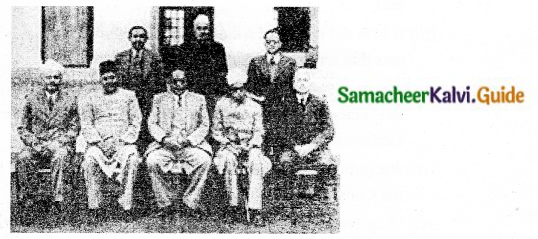
Dr. Rajendra Prasad: President of the Drafting committee:
Ambedkar. An Indian Jurist, Social Reformer and Politician. Hailed as “Father of Indian Constitution’’. Campaigned against social discrimination towards the untouchables supported the Rights of women and labour.
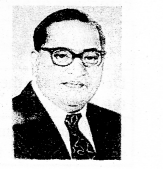
Indian political leader. A lawyer by training. Joined the Indian National congress during the Independence movement and became a major leader from the Region of Bihar. He was the first President of India after Independence and served for full two terms from 1950 – 1962. The President who served foreth longest term.
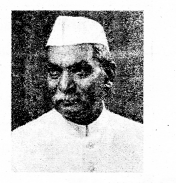
Other members:
Alladi Krishnaswamy Iyer. He was an Indian Lawy er. He also served as the Advocate General of Madras state from 1929 to 1944.
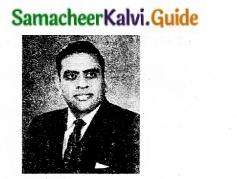
N. Gopalswami Iyengar: He was the Minister of Jammu and Kashmir from 1937 – 1943 and was appointed as council of state from 1943 – 1947. During that time he was the chairman of the committee for the Indianisation of Army from 1947 – 1948. He served as minister without Port folio in the 1st Cabinet under Pandit. Jawaharlal Nehru.
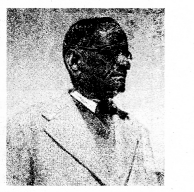
![]()
K.M. Munshi: A lawyer by profession. He was an Indian Independence movement activist, politician, writer and an educationist from Gujarat State.
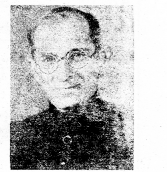
Mohammad Saadullah B.L: A youthful Chairman of Gauhati (Guwahati) Municipality in 1919. Tali and an Athletic. M.A.BL. He served as the Minister incharge of Education and Agriculture for Assam from 1924 – 1934. He was the Prime Minister of Assam under British India.
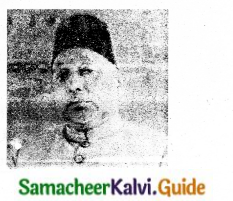
B.L. Mitter: Ex-advocate General. The one and only official subreddit for India (Nehru’s cabinet) Governor of Bihar between 1962 – 1967. Resigned from the drafting committee due to ill health. N. Madhava Rao (Diwan of Mysore state) had replaced B.L. Mitter.
D.R Khaitan: A renounced lawyer. Scion of Khaitan business family ( a new firm). Died in 1948 and T.T. Krishnamachari replaced D.R Khaitan
TB Page 175
VII. Life Skill.
Question 1.
Prepare a chart containing the Rights and Duties of citizens and display it in your class room.
Answer:
I. Right to Equality

Art. 14 – Equality before law.
Art. 15 – Prohibition of discrimination on grounds of religion, race,caste, sex or place of birth.
Art. 16 – Equality of opportunity in matters of public employment.
Art. 17 – Abolition of Untouchability.
Art. 18 – Abolition of titles except military and academic.
II. Right to Freedom

Art. 19 – Freedom of speech and expression, assembly, association, movement, residence and profession.
Art. 20 – Protection in respect of conviction for offences.
Art. 21 – Protection of life and personal liberty.
Art. 21A – Right to elementary education.
Art. 22 – Protection against arrest and detention in certain cases.
III. Right Against Exploitation

Art. 23 – Prohibition of traffic in human beings and forced labour.
Art. 24 – Prohibition of employment of children in factories, etc.
![]()
IV. Right to Religion

Art. 25 – Freedom of conscience and free profession, practice and propagation of religion.
Art. 26 – Freedom to manage religious affairs.
Art. 27 – Freedom from payment of taxes for promotion of any religion.
Art. 28 – Freedom from attending religious instruction or worship in certain educational institutions.
V. Cultural and Educational Rights
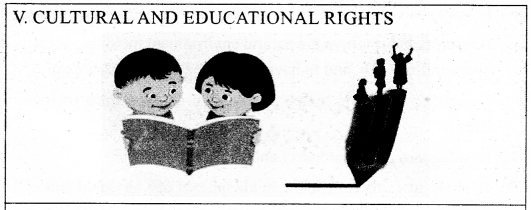
Art. 29 – Protection of language, script and culture of minorities.
Art. 30 – Right of minorities to establish and administer educational institutions.
VI. Right to Constitutional Remedies

Art. 32 – It allows individuals to seek redressal for the violation of their fundamental rights.
List of Fundamental Duties:
- To abide by the constitution and respect its ideals and institutions, the National Flag and the National Anthem.
- To cherish and follow the noble ideals which inspired the national struggle for freedom.
- To uphold and protect the sovereignty, unity and integrity of India.
- To defend the country and render national service when called upon to do so.
- To promote harmony and the spirit of common brotherhood among all the people of India transcending religious, linguistic and regional or sectional diversities; to renounce practices derogatory to the dignity of women.
- To value and preserve the rich heritage of our composite culture.
- To protect and improve the natural environment including forests, lakes, rivers and wildlife, and to have compassion for living creatures.
- To develop scientific temper, humanism and the spirit of inquiry and reform.
- To safeguard public property and to abjure violence.
- To strive towards excellence in all spheres of individual and collective activity, so that the nation constantly rises to higher levels of endeavour and achievement.
- To provide opportunities for education to his child or ward between the age of six and fourteen years. (The 86th Constitutional Amendment Act. 2002 has also introduced the 11th Fundamental Duty under 51 A(k) under which all citizens of India or parents shall provide opportunities for education to their children between age of 6 and 14 years).
![]()
TB Page 172
Question 1.
Violation of which Fundamental right is associated with the theme depleted in the stamps?
Answer:
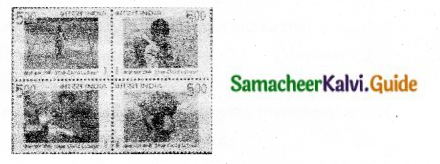
The theme (child labour) depicted in the stamps is associated with Fundamental Right. Right against Exploitation. Art 24: Prohibition of employment of children in factories, etc. (violation of employment children).
TB Page 175
Activity:
Question 1.
List out the recognised languages in the Eighth schedule of the Constitution:
Answer:
The Eighth schedule of the Constitution has recognised at present 22 languages .
They are:
- Assamee
- Bengali
- Bodo
- Dogri
- Gujarathi
- Hindi
- Kannada
- Kashmiri
- Kenkani
- Maithili
- Malayalam
- Manipuri
- Marathi
- Nepali
- Oriya
- Punjabi
- Sanskrit
- Santhali
- Sindhi
- Tamil
- Telugu
- Urdu
![]()
Samacheer Kalvi 10th Social Science Indian Constitution Additional Important Questions and Answers
I. Choose the correct answer
Question 1.
The Government of India granted ………………. languages as classical language status.
(a) 6
(b) 12
(c) 22
(d) 14
Answer:
(a) 6
Question 2.
Which of the following is given importance in the Preamble of our Constitution?
(a) Liberty
(b) Equality
(c) Fraternity
(d) All the above
Answer:
(d) All the above
Question 3.
The constituent Assembly held its first meeting on December ………………. 1946.
(a) 1st
(b) 5th
(c) 6th
(d) 26th
Answer:
(c) 6th
![]()
Question 4.
‘Education’ comes under which list?
(a) Union list
(b) State list
(c) Concurrent list
(d) None of the above
Answer:
(c) Concurrent list
Question 5.
Every year 26th January is observed as ……………….
(a) Independence day
(b) Gandhi Jayanthi
(c) Voters day
(d) Republic day
Answer:
(d) Republic day
Question 6.
Indian Constitution is the …………… Constitution in the world.
(a) Longest
(b) Shortest
(c) Lengthiest
Answer:
(c) Lengthiest
Question 7.
In the preamble of our Constitution the slogans of ………………. Liberty, Equality and Fraternity is given importance.
(a) French Revolution
(b) Russian Revolution
(c) American Revolution
(d) German Revolution
Answer:
(a) French Revolution
![]()
Question 8.
The Constituent Assembly was set up under ……………..
(a) Cripps Mission
(b) Cabinet Mission Plan of 1946
(c) Government of India Act, 1935
Answer:
(b) Cabinet Mission Plan of 1946
Question 9.
………………. emergency can be declared under Article 356.
(a) National
(b) Financial
(c) State
(d) None of these
Answer:
(c) State
Question 10.
Apart from B.R. Ambedkar, how many other members were in the Drafting Committee?
(a) 4
(b) 6
(c) 7
Answer:
(b) 6
II. Fill in the Blanks
- Our Constitution is concerned with the framework of distribution of powers between the various organs of the government and between ………………. and ……………….
- H.C. Mukherjee and ………………. were elected as the Vice-Presidents of the constituent Assembly at the time of framing Constitution.
- The original Constitution was hand written by ……………….
- Our Constitution is the ………………. of all the written Constitutions of the world.
- India is a ………………. state.
- The right to vote to all citizens above 18 years of age without any discrimination is ……………….
- The preamble to the Indian Constitution is based on the ………………. drafted by Jawaharlal Nehru
- Preamble begins with the phrase ……………….
- The citizenship Act has been amended is far ………………. times.
- The ………………. writ safeguards people from illegal arrest.
- Under Article 21 A ………………. education was made as fundamental right to provide early childhood care and education.
- The 42nd Amendment Act of 1976 transferred ………………. subjects from state list to concurrent list.
- Article 51A specified for the first time a code of fundamental duties of ………………. the citizens.
- Parliament enacted the official language Act in the year
Answers:
- Union and the States
- V.T. Krishnamachari
- Prem Behari Narain Raizada
- lengthiest
- Secular
- Universal Adult Franchise
- ‘Objective Resolution’
- We the people of India
- eight
- Habeas Corpus
- elementary
- five
- ten
- 1963
![]()
III. Match the Following
Question 1.
Match the Column I with Column II.


Answers:
A. (iii)
B. (iv)
C. (v)
D. (ii)
E. (i)
Question 2.
Match the Column I with Column II.
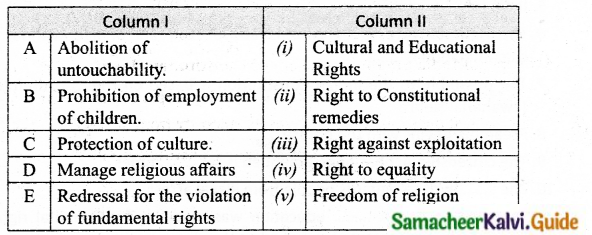
Answers:
A. (iv)
B. (iii)
C. (i)
D. (v)
E. (ii)
IV. Give short Answers
Question 1.
Mention the phrase with which the Preamble of our Constitution begins? What does this imply?
Answer:
The Preamble of our Constitution beings with the phrase “We, the People of India”. This implies that the constitution derives its authority from the people of India.
Question 2.
Write a brief note on how our Constitution is framed?
Answer:
A Constituent Assembly was set up in 1946 to frame the Constitution . The Assembly consisted 389 members Dr. Rajendra Prasad as the president and Dr. B.R. Ambedkar Chairman of the drafting committee. The Assembly worked through various committees and finally completed the draft. It was adopted on November 26th 1949. Came into force on 26th January 1950.
![]()
Question 3.
What is mandamus?
Answer:
Mandamus is a kind of writ that protects the petitioner who requires legal help to get his work done by respective public authorities.
Question 4.
What does Preamble refer to ? What does it contain?
Answer:
- The term Preamble refers to the introduction or preface to the Constitution.
- It consists of ideals, objectives and basic principles of the Constitution.
- It is described as the ‘Key to the Constitution’.
Question 5.
Mention three ways of amendments in our Constitution.
Answer:
Our Constitution can be amended in the following three ways –
- Amendment by a simple majority of the Parliament.
- Amendment by a special majority of the Parliament.
- Amendment by a special majority of the Parliament and the ratification of half of the State legislatives.
Question 6.
Name the three basic principles of our Constitution adopted from die slogan of French Revolution (1789).
Answer:
- Liberty of thought, expression, belief, faith and worship to all.
- It gives Equality of status and opportunity.
- It wants to promote Fratemity(brotherhood) among all Indians.
Question 7.
Abolition of titles lies in which Article of the Constitution.
Answer:
Abolition of titles lies in Article 18.
Question 8.
What change is made in Article 45 by 86th Amendment Act?
Answer:
- The 86th Amendment Act of 2002 changed the subject matter of Article 45 and made elementary education a fundamental right under Article 21 A.
- The amended directive request the State to provide early childhood care and education for all children until they complete the age of 6 years.
Question 9.
Which is the single biggest source of Indian Constitution?
Answer:
The single biggest source of Indian Constitution is Government of India Act 1935.
Question 10.
Name the five subjects that are transferred from the State List to the Concurrent List.
Answer:
Education, Forests, weights and measures, protection of wild animals and birds and administration of justice, Constitution and organisation of all courts except the supreme court and the high courts.
![]()
V. Answer in Detail
Question 1.
Mention any five Fundamental duties of the citizens of India.
Answer:
- To abide by the Constitution and respect its ideals and institutions, the National Flag and the National Anthem.
- To cherish and follow the noble ideals which inspired the National struggle for freedom.
- To uphold and protect the sovereignty, unity and integrity of India.
- To defend the country and render national service when called upon to do so.
- To promote harmony and the spirit of common brotherhood among all the people of India transcending religious, linguistic and regional or sectional diversities; to renounce practices derogatory to the dignity of women.
Question 2.
How can a person acquire citizenship of our country?
Answer:
According to the citizenship Act 1955, the citizenship could be acquired by any of these five ways.
- By Birth: All persons bom in India on or after January 26th, 1950 are treated as citizens by birth.
- By Descent: A person bom outside India on or after January 26th 1950 shall be a citizen of India by descent if his father is a citizen of India at the time of his birth.
- By Registration: Aperson can acquire citizenship of India by registration with appropriate authority.
- By Naturalization: A foreigner can acquire Indian citizenship on application for naturalization to the Government of India.
- By incorporation of Territory: In the event of a certain territory being added to the territory of India, the Government of India shall specify the persons of that territory who shall be the citizen of India.
Question 3.
What are the circumstances that compel the President to declare an emergency in a State?
Answer:
(i) Under Article 356, the President has the power to declare an emergency in a State if the Governor reports that a situation has risen under which the Government of a State cannot be carried on in accordance with the provisions of the Constitution.
(ii) The continuance of such an emergency beyond one year is possible only if emergency under Article 352 are in operation or the Election Commission certifies that there are difficulties in holding Assembly Elections. Maximum duration of the emergency can be three years.
(iii) In this kind of emergency, the States lose much of their autonomy in legislative and executive matters.
(iv) After such an announcement State legislative is suspended and the State is governed by the Governor on behalf of the President.
Question 4.
List the fundamental duties of every citizen of India.
Answer:
Under part IVA of our Constitution Article 51A declares the duty of a Citizen of India.
- To abide by the Constitution and respect its ideals and institutions, the National Flag and the National Anthem.
- To Cherish and follow the noble ideals which inspired die national struggle for freedom.
- To uphold and protect the sovereignty, unity and integrity of India.
- To defend the country and render national service when called upon to do so.
- To promote harmony and the spirit of common brotherhood among all the people of India.
- To renounce practices derogatory to the dignity of women.
- To value and preserve the rich heritage of our composite culture.
- To Protect and improve the natural environment including forests, lakes,
- rivers and wild life and to have compassion for living creatures.
- To develop scientific temper, humanism and the spirit of inquiry and reform.
- To safe guard public property and to abjure violence.
- To strive towards excellence in all spheres of individual and collective activity making the nation constantly rises to higher levels of endeavor and achievement.
- To provide opportunities for education to his child or ward between the age of six and fourteen years.
- Under 51 A (k) 11th fundamental duty.
![]()
Question 5.
Write briefly about Acquisition of Citizenship.
Answer:
The Citizenship Act of 1935 prescribes five ways of acquiring citizenship, “viz, birth, descent, registration, naturalisation and incorporation of territory.
According to the Citizenship Act, 1955, the citizenship could be acquired through any of the following methods.
(i) By Birth: All persons bom in India on or after 26 January, 1950 are treated as citizens by birth.
(ii) By Descent: A person bom outside India on or after 26 January, 1950 shall be a citizen of India by descent. If his father is a citizen of India at the time of his birth.
(iii) By Registration: A person can acquire citizenship of India by registration with appropriate authority.
(iv) By Naturalisation: A foreigner can acquire Indian Citizenship on application for naturalization to the Government of India.
(v) By Incorporation of Territory: In the event of a certain territory being added to the “territory of India, the Government of India shall specify the persons of that territory who shall be citizen of India.
![]()
Question 6.
Write a paragraph on Constitutional Reform commissions.
Answer:
The National commission to review the working of the Constitution was set up by a resolution of the Government of India in 2000, headed by M.N Venkatachaliah. In April 2007 a three member commission headed by the former Chief Justice of India M.M. Punchchi was set up by the Government to take a fresh look at relative roles and responsibilities of various levels of Government and their inter relations.